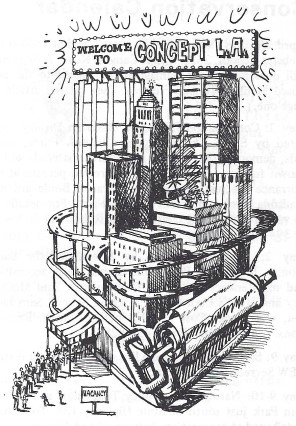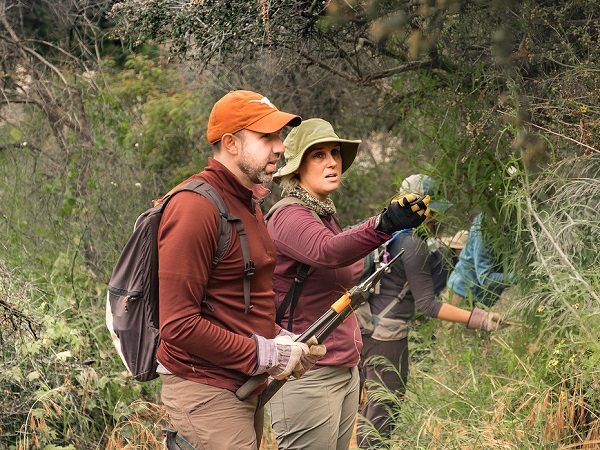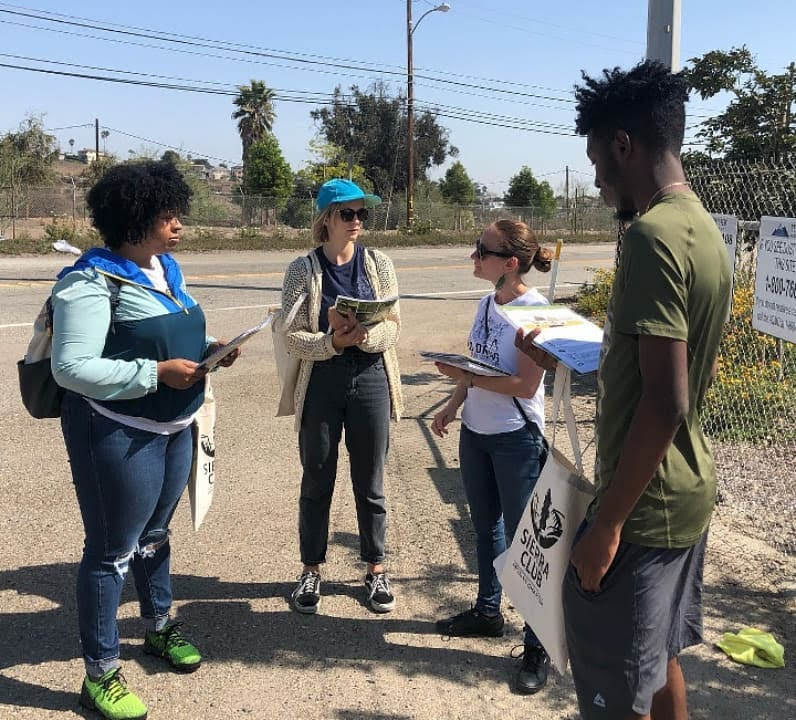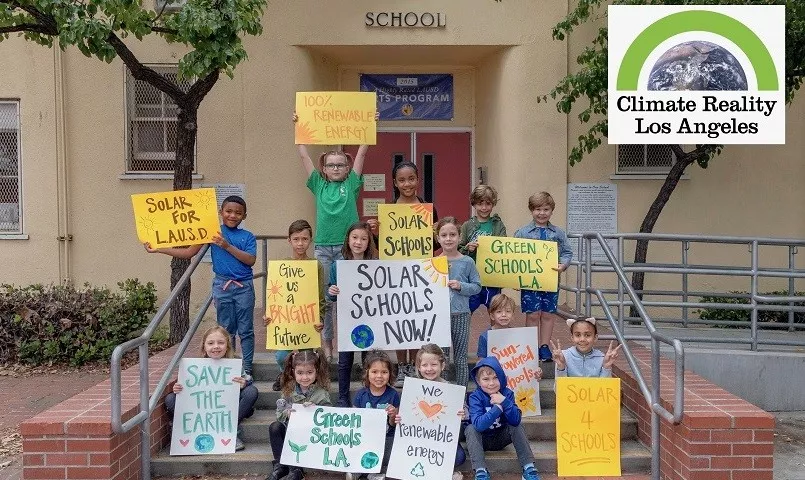 Earth Day 1970 at the Angeles Chapter
Earth Day 1970 at the Angeles Chapter
Illustration by Len Chmiel
The first Earth Day was celebrated in Washington D.C., 50 years ago, on April 22, 1970. But by then the Angeles Chapter had already been working to preserve the Earth and its wild places for decades.
Formed in 1911 as the Sierra Club’s first chapter, by 1970 the Angeles Chapter had grown to 12,500 members. It had weathered wars, depressions and recession, floods and fires. It had fought, sometimes winning and other times losing, the lasting damage caused by rampant development and wanton pollution. As reflected in archived issues of the Southern Sierran, the chapter was energetically working on national, regional and local issues.
By 1970, the chapter’s conservation efforts swelled with the formation (or at least proposal) of subcommittees to address 21 separate issues, including water, air, noise, and visual pollution. The chapter chair urged equitable efforts to fight air pollution, telling the state legislature, “to ask the citizens to both breathe polluted air and to pay for most of the control program to clean it up, as they are now, is to add insult to the very real injury they are suffering, every day from the air they are forced to breathe.” The chapter engaged in outreach, by organizing “teach-ins” at 15 local colleges and universities.
One of the urgent issues facing the chapter in 1970 was opposition to the development of Mineral King, a beautiful ring of mountains surrounded by Sequoia Kings Canyon National Park. Walt Disney Productions wanted to build a ski resort there. The fight took over ten years. The club lost at the U.S. Supreme Court, but the legal challenges eventually led to the project being abandoned. The area was subsequently annexed into the national park.
Beaches, including the Nipomo Dunes, and desert habitat were saved in part due to work by chapter activists.

Also on the agenda was stopping the construction of a freeway through Malibu Canyon. The Malibu-Whitnal Freeway would have cut through the scenic canyon and then crossed the San Fernando Valley to Burbank.
Freeways through Laurel Canyon and Topanga Canyon were also cancelled due to opposition from citizens, including chapter members. “Concept Los Angeles”, a plan for a population increase of 70%, was viewed with skepticism.
At the federal level, members successfully lobbied their representatives to defeat the National Timber Supply Act, which would have greatly expanded logging in the country’s national forests.
Banning DDT was another urgent project for members.

Some struggles were internal. One member questioned the chapter’s diversity. HPS list finisher Fern Tantzen wrote: “Almost everywhere in the land people are becoming aware of their environment and the idea of conservation is spreading… Is the message only for white folks? Are our minorities...not in need of information, education, nature appreciation? What is the Sierra Club doing to enlist their help in its cause? … I would like to see them made welcome in our ranks ... I want them to share our enjoyment of the open spaces. ...We need ALL our citizens in the fight against pollution."
Since 1970, the chapter has faced more wars, more fires and floods, more epidemics. Even during those crises our membership has persistently fought against pollution and development, and for healthy communities and wildlife.
Activists in the chapter’s conservation program continue to work to protect the earth’s wildplaces, organizing with diversity, equity and inclusion. The conservation subcommittees, along with regional groups and activity sections, fight for local issues like preserving open space habitat, ensuring clean drinking water, and shutting down harmful oil drilling and gas storage facilities. We fight for those issues because they are important to the earth’s long term health, and also to the short term health of every one of us.
Nature is resilient and so is the human spirit. Working together, we’ll make sure that Earth Day 100 will be celebrated with a healthy planet.
